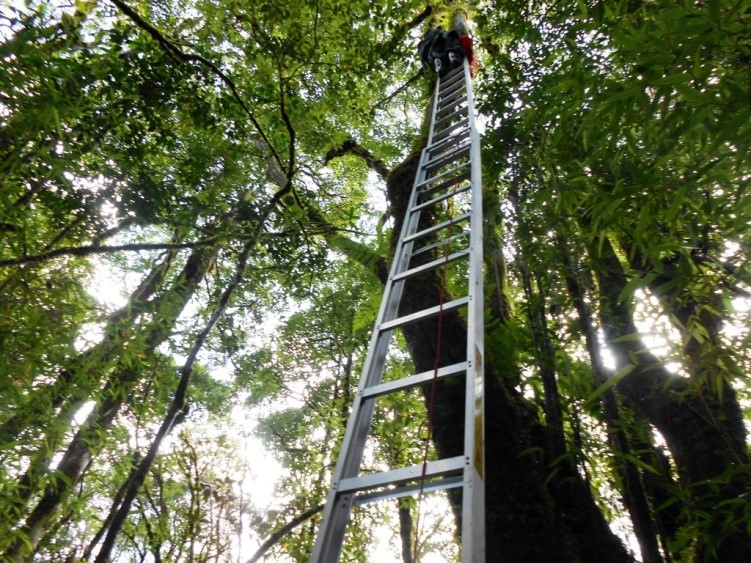
Forest canopies offer an excellent opportunity for exploring interactions between clonality and inter-specific facilitation. However, we know very little about the interaction of epiphytes within the canopy, and how such an interaction is affected by clonal integration.
In a study published online in New Phytologist, researchers from Xishuangbanna Tropical Botanical Garden (XTBG) showed that clonal integration had greater benefits than inter-specific facilitation for vascular epiphytes in forest canopies. Many vascular epiphytes in forest canopies depended less on inter-specific facilitation due to their clonal integration.
The researchers conducted a field experiment combining neighbor removal and rhizome severing treatments with seven dominant vascular epiphytes (all rhizomatous clonal species) in forest canopies in a primary montane moist forest in Yunnan, Southwest China.
They found that epiphyte species and initial size affected substantially both ramet survival and biomass. Rhizome severance negatively affected survival and biomass, but such effects differed greatly among species. Neighbor removal also reduced survival and biomass, and this effect on survival was irrespective of species.
There was also a significant two-way interaction between severance and removal, indicating that the negative impacts of severance were greater when neighbors were removed; that interaction effect on survival and biomass also differed between species
“Our study provides novel evidence for interactive effects of clonality and facilitation between vascular and non‐vascular species,” said Prof. LIU Wenyao, principal investigator of the study.
“We might expect the role of facilitation from non-vascular epiphytes to be particularly important at stages of the vascular epiphyte where clonal integration is not possible, e.g. when these plants are developing from spores or seeds,” said Prof. LIU.
Contact
Prof. LIU Wenyao Ph.D
Key Laboratory of Tropical Forest Ecology, Xishuangbanna Tropical Botanical Garden, Chinese Academy of Sciences, Mengla, Yunnan 666303, China
E-mail: liuwy@xtbg.ac.cn

Researchers collect epiphytic ferns in the forest canopy. (Image by LU Huazheng)
| Menglun, Mengla, Yunnan 666303, China. Copyright XTBG 2005-2011 Powered by XTBG Information Center |